The Role of Wind Energy in Sustainable Living
As we navigate the complexities of climate change and dwindling natural resources, the quest for sustainable living has never been more pressing. One of the most promising solutions lies in the harnessing of wind energy. This renewable energy source not only provides a cleaner alternative to fossil fuels but also plays a vital role in shaping a sustainable future. Imagine a world where the gentle breeze not only cools us down on a hot day but also powers our homes, schools, and businesses. In this article, we will explore the significance of wind energy in promoting sustainable living, delving into its benefits, challenges, and the potential it holds for the future.
Wind energy is the process of converting the kinetic energy of wind into mechanical power, which can then be transformed into electricity. At the heart of this process are widely recognized wind turbines. These towering structures, often seen dotting the landscape, consist of blades that catch the wind's force, causing them to spin. This spinning motion turns a generator, producing electricity. As we embrace the transition to renewable energy, wind turbines are becoming crucial players in the energy sector, providing a sustainable solution that reduces our reliance on fossil fuels.
The advantages of wind energy are numerous and impactful. First and foremost, it helps reduce greenhouse gas emissions, which are a major contributor to climate change. By generating energy from wind, we can significantly lower our carbon footprint. Additionally, wind energy promotes energy independence, allowing countries to rely less on imported fuels. This not only enhances national security but also stabilizes energy prices. Furthermore, the wind energy sector is a burgeoning source of job creation, providing employment opportunities in manufacturing, installation, and maintenance of wind turbines.
When it comes to environmental benefits, wind energy stands out as a champion in the fight against climate change. By substituting fossil fuels with wind energy, we can drastically lower greenhouse gas emissions. For example, a single wind turbine can offset the equivalent of approximately 1,500 tons of carbon dioxide each year. This significant reduction in emissions contributes to cleaner air and a healthier planet.
Utilizing wind energy leads to a marked decrease in harmful air pollutants, such as sulfur dioxide and nitrogen oxides. These pollutants are notorious for causing respiratory problems and other health issues. By replacing coal and natural gas with wind energy, we can enjoy cleaner air, which translates into improved public health outcomes. Imagine breathing in fresh, clean air instead of the smoggy haze that often blankets urban areas—this is the promise of wind energy.
Another compelling advantage of wind energy is its minimal impact on water resources. Unlike traditional energy sources that require copious amounts of water for cooling and processing, wind energy operates with virtually no water consumption. This conservation of water is critical, especially in regions facing drought or water scarcity. By choosing wind power, we are not only generating electricity but also safeguarding our most precious resource—water.
Investing in wind energy can stimulate local economies in various ways. From creating jobs in manufacturing and installation to boosting local businesses that support wind farms, the economic ripple effect is substantial. For instance, a single wind farm can create dozens of jobs during its construction phase and several permanent positions once operational. Additionally, the infrastructure development associated with wind energy projects can lead to improved roads and facilities, benefiting the community as a whole.
Despite its many benefits, wind energy is not without its challenges. One significant hurdle is the intermittency of wind. Wind speeds can vary dramatically, leading to fluctuations in energy production. However, advancements in energy storage technologies and smart grid management are paving the way for solutions to these issues. By integrating battery storage systems and enhancing grid infrastructure, we can ensure a more reliable supply of wind-generated electricity.
To tackle the intermittency challenges, energy storage solutions such as batteries or pumped hydro storage can be employed. These technologies allow excess energy generated during windy periods to be stored and used when the wind isn't blowing. This not only stabilizes the energy supply but also maximizes the efficiency of wind energy systems.
Another challenge is the land use required for wind farms, which can impact local wildlife and ecosystems. Striking a balance between the development of wind energy and the preservation of natural habitats is crucial. Careful planning and environmental assessments can help mitigate these impacts, ensuring that we protect our wildlife while harnessing the power of wind.
- What is wind energy? Wind energy is the process of converting wind's kinetic energy into electricity using wind turbines.
- How does wind energy benefit the environment? It reduces greenhouse gas emissions, air pollution, and conserves water resources.
- What are the economic benefits of wind energy? Wind energy creates jobs, stimulates local economies, and promotes energy independence.
- What challenges does wind energy face? Key challenges include intermittency of wind and land use concerns.
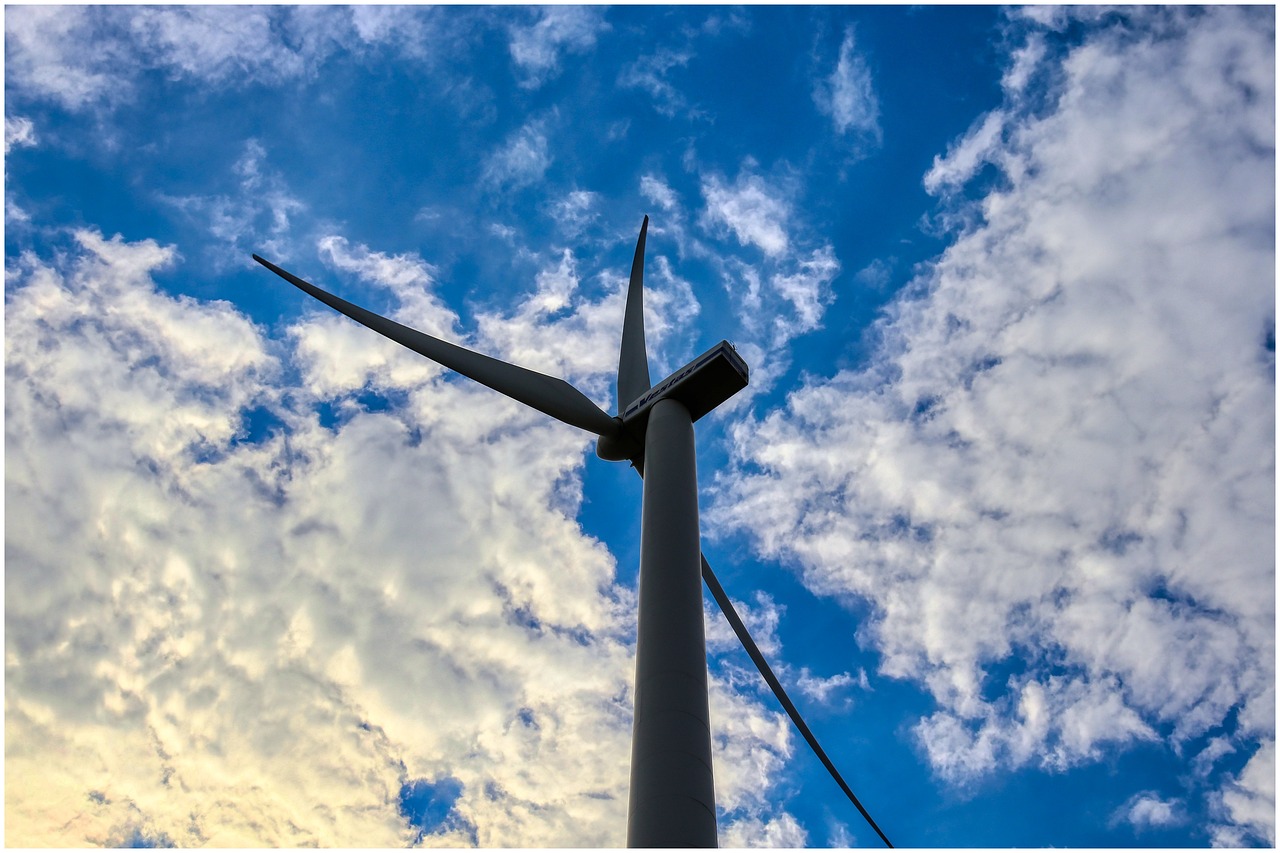
Understanding Wind Energy
Wind energy is a fascinating and rapidly growing sector of renewable energy that harnesses the natural power of the wind to generate electricity. At its core, the process involves converting kinetic energy from wind into mechanical power, which is then transformed into electrical energy. This is primarily achieved through the use of wind turbines, which are large structures equipped with blades that capture the wind's energy. When the wind blows, it causes the blades to rotate, which spins a rotor connected to a generator that produces electricity. It’s like having a giant pinwheel that not only spins but also powers our homes and businesses!
Wind turbines can be found in various settings, from offshore installations in the open sea to onshore farms spread across vast landscapes. Each type has its unique advantages and challenges, but both contribute significantly to our energy mix. The efficiency of these turbines depends largely on wind speed; ideally, they perform best in areas with consistent and strong winds. This leads us to a crucial aspect of wind energy: location is everything! Placing turbines in optimal spots maximizes their output, making it essential for energy planners to conduct thorough site assessments.
Let’s break down the basic components of a wind turbine:
- Blades: These are designed to capture wind energy and convert it into rotational energy.
- Rotor: The rotor consists of the blades and the hub, which connects them to the generator.
- Generator: This component converts mechanical energy from the rotor into electrical energy.
- Tower: The tower supports the rotor and generator, elevating them to capture stronger winds.
Moreover, wind energy plays a pivotal role in the renewable energy sector as it is one of the most cost-effective sources of electricity generation today. According to recent studies, the cost of wind energy has decreased by over 70% in the last decade, making it an attractive option for both utility-scale projects and smaller, community-based initiatives. As technology advances, we can expect even greater efficiency and lower costs, paving the way for a cleaner energy future.
In summary, understanding wind energy involves recognizing its mechanics, benefits, and the critical role it plays in our transition to sustainable living. With the right investments and innovations, wind energy has the potential to power millions of homes and businesses while significantly reducing our carbon footprint.

Benefits of Wind Energy
Wind energy is not just a buzzword; it's a powerhouse of potential that can transform our approach to energy consumption and sustainability. Imagine harnessing the natural, free-flowing energy of the wind to power our homes, businesses, and cities. This is exactly what wind energy offers, and the benefits are as vast as the skies it draws from. One of the most significant advantages is the reduction of greenhouse gas emissions. By shifting from fossil fuels to wind power, we can drastically cut down the amount of carbon dioxide and other harmful pollutants released into the atmosphere. This transition is crucial in the fight against climate change, as it helps to create a cleaner and healthier environment for future generations.
Moreover, wind energy promotes energy independence. Countries that invest in wind energy reduce their reliance on imported fossil fuels, which can be subject to volatile prices and geopolitical tensions. By generating electricity locally, nations can stabilize their energy costs and enhance their energy security. This not only empowers communities but also fosters economic resilience. Furthermore, the wind energy sector is a significant source of job creation. From manufacturing and installation to maintenance and operation, wind energy projects create a diverse range of employment opportunities. For instance, the U.S. wind sector alone has employed over 100,000 workers, and this number continues to grow as more projects come online.
In addition to these economic and environmental benefits, wind energy plays a vital role in conserving our planet's resources. Unlike traditional energy sources, wind power requires minimal water for operation. This is particularly important in regions facing water scarcity, where every drop counts. By reducing water usage, we not only protect this precious resource but also minimize the impact on aquatic ecosystems. In fact, a typical wind turbine uses less than 2% of the water required by a natural gas plant to generate the same amount of electricity. This remarkable efficiency is just one of the reasons why wind energy is becoming a preferred choice for sustainable living.
To summarize, the benefits of wind energy are multifaceted, spanning environmental, economic, and resource conservation aspects. As we look to the future, embracing wind power can lead to a cleaner, more sustainable world. Its ability to create jobs, reduce pollution, and conserve vital resources makes it an essential player in the global energy landscape.
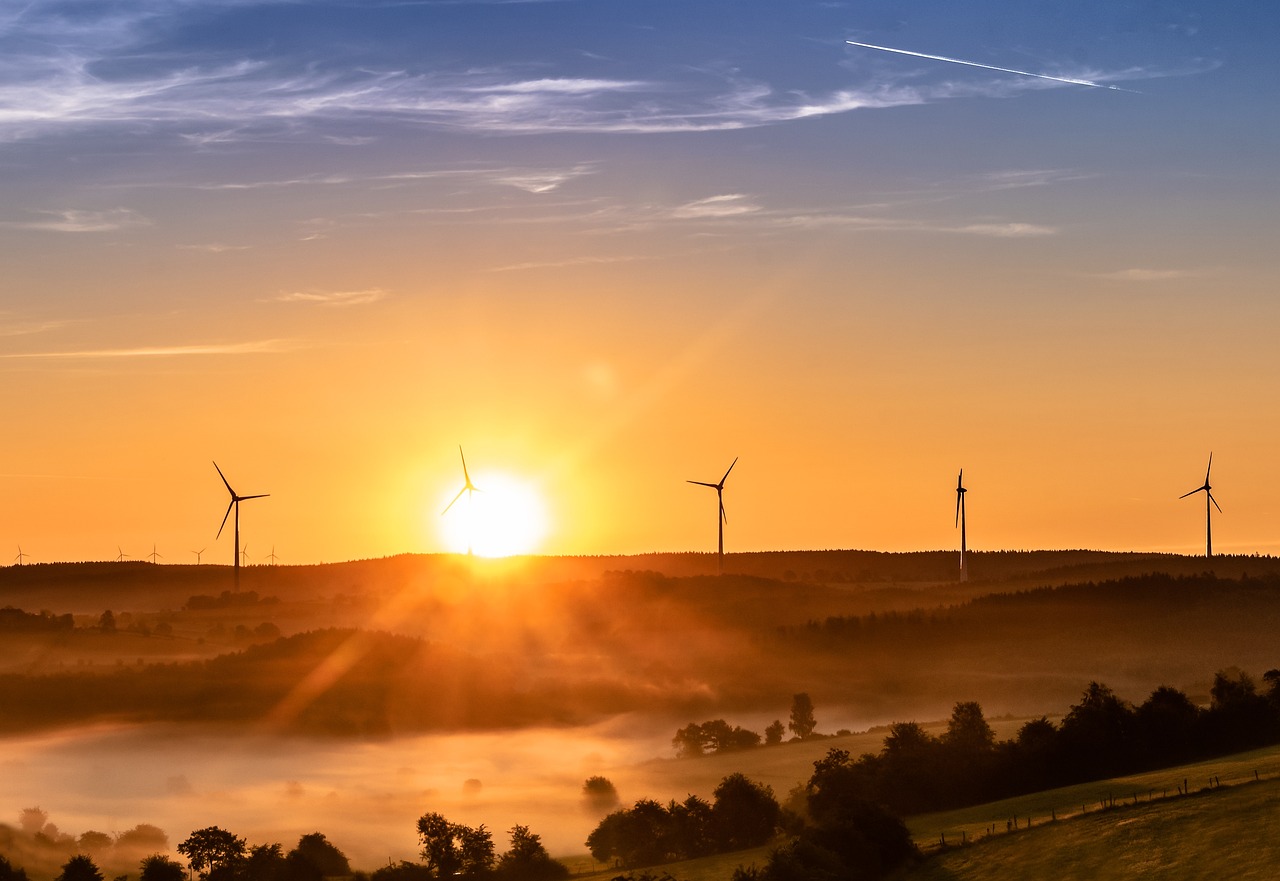
Environmental Impact
When we talk about wind energy, one of the first things that come to mind is its remarkable environmental impact. Unlike fossil fuels, which release harmful emissions into the atmosphere, wind energy stands out as a clean and renewable source of power. By harnessing the natural movement of air, wind turbines convert kinetic energy into electricity, significantly reducing our reliance on carbon-intensive energy sources. This shift not only helps to lower greenhouse gas emissions but also plays a crucial role in combating climate change.
The environmental benefits of wind energy are profound. For instance, studies have shown that wind energy can reduce carbon dioxide emissions by approximately avoiding over 329 million metric tons of CO2 annually in the United States alone. This is equivalent to taking about 70 million cars off the road. By investing in wind power, we are taking a substantial step towards a cleaner, more sustainable future.
Moreover, the impact on air quality is equally impressive. Traditional energy sources like coal and natural gas release a cocktail of pollutants, including sulfur dioxide and nitrogen oxides, which can lead to severe health issues. In contrast, wind energy produces zero air pollutants during operation. This means fewer respiratory problems, reduced hospital visits, and an overall improvement in public health. The World Health Organization has even linked cleaner air to increased life expectancy, showcasing the far-reaching benefits of transitioning to wind energy.
Another often-overlooked aspect of wind energy is its minimal water usage. Conventional power plants, especially those that rely on fossil fuels, require vast amounts of water for cooling and processing. In stark contrast, wind turbines use virtually no water during their operation. This is crucial, especially in regions facing water scarcity. By conserving water resources, wind energy not only supports environmental sustainability but also aids in protecting aquatic ecosystems.
To put it into perspective, let's consider a table comparing the water usage of various energy sources:
| Energy Source | Water Usage (gallons per MWh) |
|---|---|
| Coal | 2,000 - 5,000 |
| Natural Gas | 500 - 1,000 |
| Nuclear | 700 - 1,500 |
| Wind | 0 |
As we can see, wind energy stands out as a champion of water conservation, making it an even more attractive option for sustainable living. However, it’s essential to recognize that while wind energy offers these significant environmental advantages, it is not without its challenges. Addressing these challenges while maximizing the benefits is key to integrating wind energy into our broader energy strategy.
In conclusion, the environmental impact of wind energy is overwhelmingly positive. By reducing greenhouse gas emissions, improving air quality, and conserving water resources, wind energy not only paves the way for a sustainable future but also enhances our quality of life. As we continue to explore and invest in this renewable resource, we move closer to a world where clean energy is the norm rather than the exception.
- What are the main benefits of wind energy? Wind energy reduces greenhouse gas emissions, conserves water, and improves air quality.
- How does wind energy impact wildlife? While wind farms can affect local wildlife, careful planning and site selection can mitigate these impacts.
- Is wind energy reliable? Wind energy can be intermittent, but advancements in energy storage and grid management are making it more reliable.
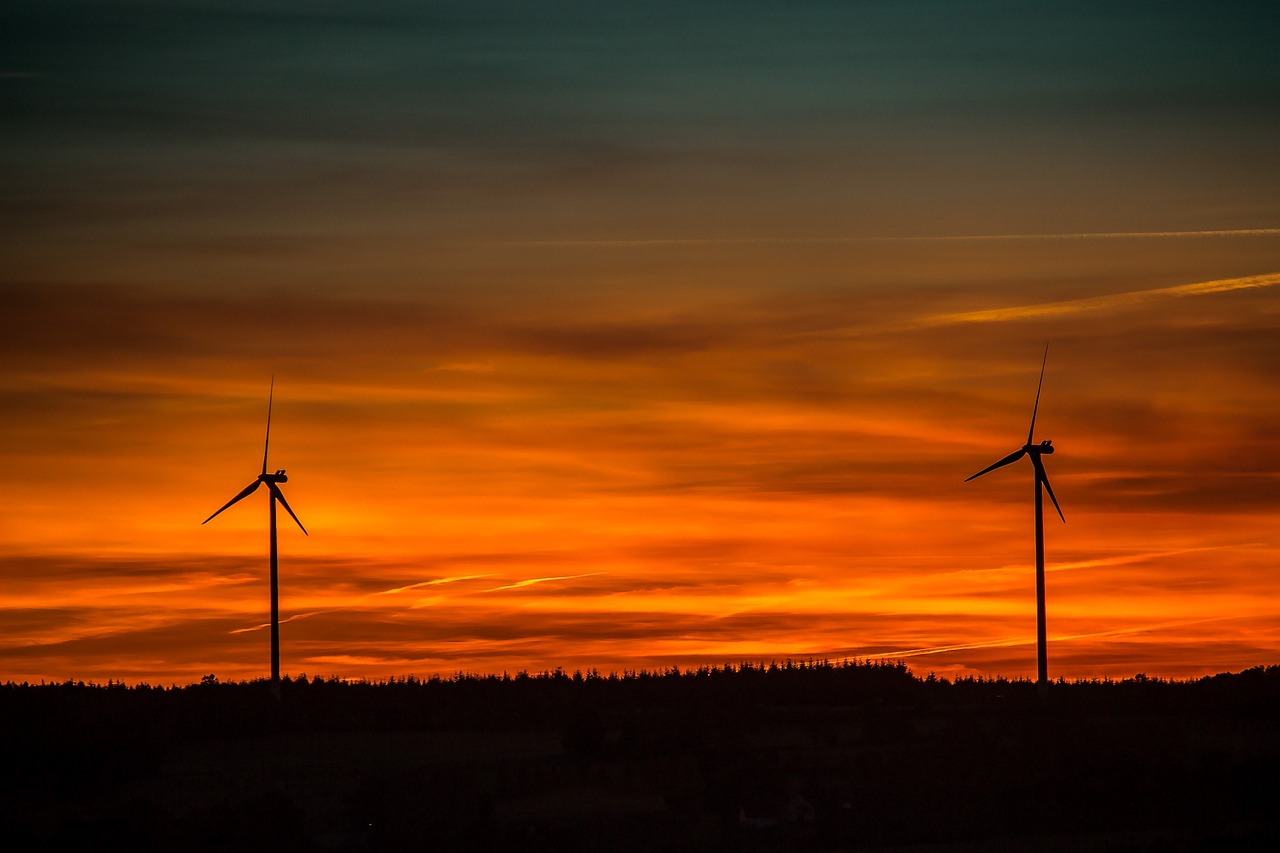
Reduction of Air Pollution
When we think about the air we breathe, it's easy to overlook the profound impact our energy choices have on air quality. Wind energy emerges as a champion in this arena, offering a clean, renewable alternative to fossil fuels that significantly reduces harmful emissions. Unlike traditional energy sources, which release a cocktail of pollutants into the atmosphere, wind turbines operate silently and efficiently, harnessing nature's breath without contributing to air pollution.
To grasp the magnitude of this impact, consider the following: fossil fuel combustion is responsible for a substantial portion of air pollutants, including carbon monoxide, nitrogen oxides, and particulate matter. These pollutants not only contribute to smog and respiratory issues but also exacerbate climate change. In contrast, wind energy produces zero emissions during its operation, making it a game-changer for public health and environmental sustainability.
According to recent studies, transitioning to wind energy could lead to a significant reduction in air pollutants. For instance, a report from the U.S. Department of Energy highlights that increasing wind energy capacity could prevent thousands of premature deaths and reduce healthcare costs associated with air pollution. This is not just a theoretical benefit; it’s a tangible improvement in the quality of life for communities near wind farms.
Moreover, the shift to wind energy provides a ripple effect that enhances public health. By decreasing air pollution, we can expect:
- Fewer respiratory illnesses and hospital visits.
- Improved overall health outcomes in vulnerable populations.
- Lower healthcare costs associated with pollution-related diseases.
It's also worth noting that the wind energy sector is continuously innovating. New technologies and practices are being developed to optimize turbine efficiency and reduce their environmental footprint even further. For instance, advancements in turbine design allow for greater energy capture with less impact on local wildlife and ecosystems.
In summary, the reduction of air pollution through wind energy is not merely a side benefit; it is a fundamental reason to embrace this renewable resource. By investing in wind energy, we are investing in a cleaner, healthier future for ourselves and generations to come. The transition to wind power is not just a shift in energy production; it's a commitment to safeguarding our planet and improving public health.
- How does wind energy reduce air pollution? Wind energy generates electricity without releasing harmful pollutants, unlike fossil fuels.
- What are the health benefits of using wind energy? Reduced air pollution leads to fewer respiratory diseases and lower healthcare costs.
- Are there any downsides to wind energy? While wind energy is cleaner, challenges such as intermittency and land use must be managed.
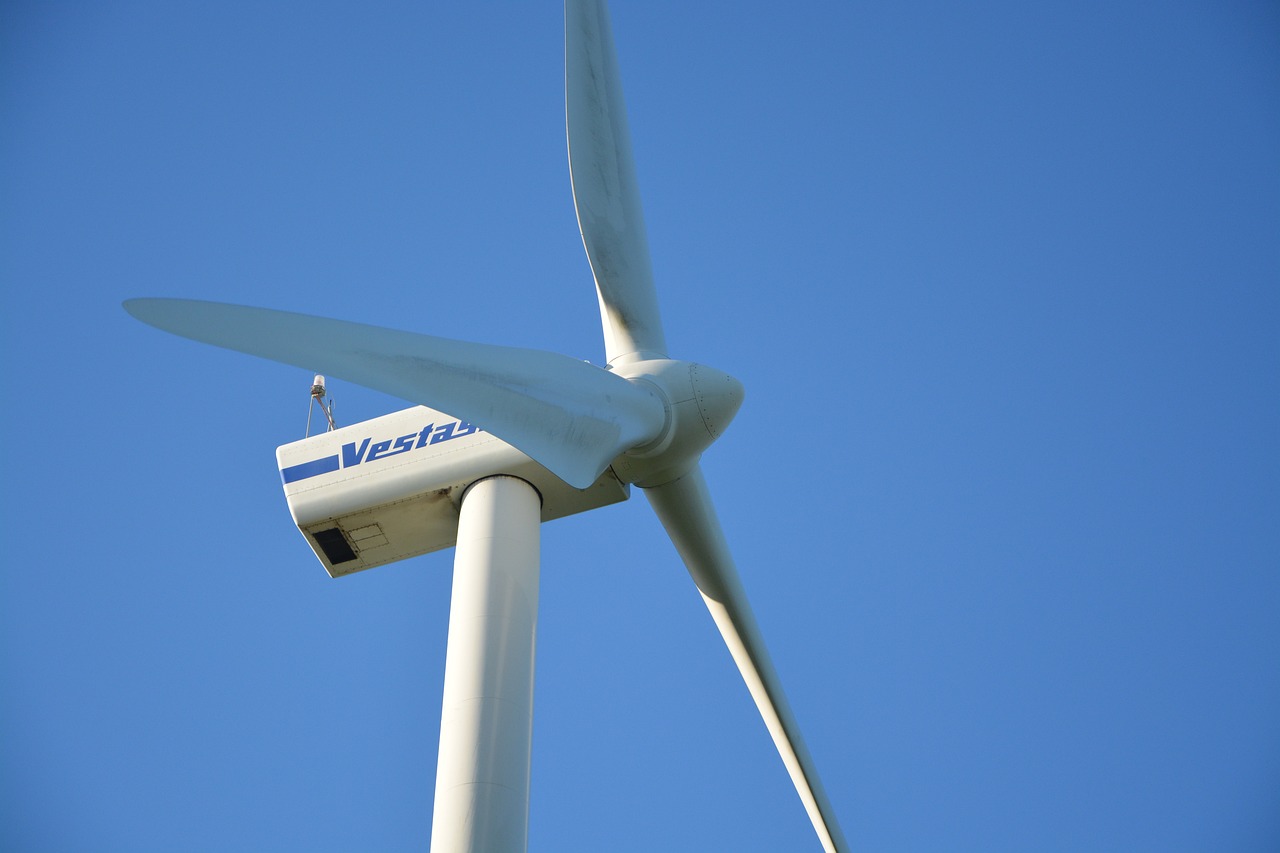
Conservation of Water Resources
When we think about energy production, we often picture vast amounts of water being used to cool down power plants or to extract resources. However, one of the remarkable aspects of wind energy is its minimal impact on our precious water resources. Unlike traditional fossil fuel plants that may consume millions of gallons of water each day, wind turbines operate with a significantly lower water footprint. In fact, the water used in wind energy production is primarily for maintenance purposes, such as cleaning the blades, rather than for generating electricity.
This efficient use of water is crucial, especially in regions facing water scarcity. With climate change exacerbating droughts and affecting water availability, the need for sustainable energy sources that conserve water has never been more pressing. By harnessing the power of the wind, we are not only generating clean energy but also playing a vital role in preserving our water supplies for future generations.
To illustrate the contrast between wind energy and traditional energy sources, consider the following table:
| Energy Source | Water Usage (Gallons per MWh) |
|---|---|
| Coal | 1,000 - 2,000 |
| Natural Gas | 500 - 1,000 |
| Nuclear | 600 - 1,200 |
| Wind | 0 (Minimal Maintenance) |
This table highlights the stark difference in water consumption between conventional energy sources and wind energy. By choosing wind power, we are not only reducing our carbon footprint but also ensuring that we are protecting our water resources. This is particularly important in agricultural regions where water is essential for crop irrigation and livestock. The less water we use for energy production, the more we can allocate for these critical needs.
Furthermore, wind energy contributes to the overall sustainability of our ecosystems. By reducing the demand for water-intensive energy sources, we are helping to maintain the natural balance of our waterways and habitats. This conservation effort is essential for supporting biodiversity and ensuring that wildlife has the necessary resources to thrive.
In summary, the conservation of water resources is one of the many benefits of wind energy. By investing in this renewable resource, we are not only addressing the pressing issue of climate change but also safeguarding our vital water supplies for the future. It's a win-win situation that underscores the importance of transitioning to sustainable energy solutions.
- How does wind energy conserve water compared to fossil fuels?
Wind energy uses negligible water for electricity generation, primarily for maintenance, while fossil fuels consume large amounts of water for cooling and extraction processes. - What are the environmental benefits of wind energy?
In addition to conserving water, wind energy reduces greenhouse gas emissions and air pollutants, contributing to cleaner air and combating climate change. - Are there any challenges associated with wind energy?
Yes, challenges include intermittency of wind and potential impacts on wildlife and land use, but advancements in technology and planning can mitigate these issues.
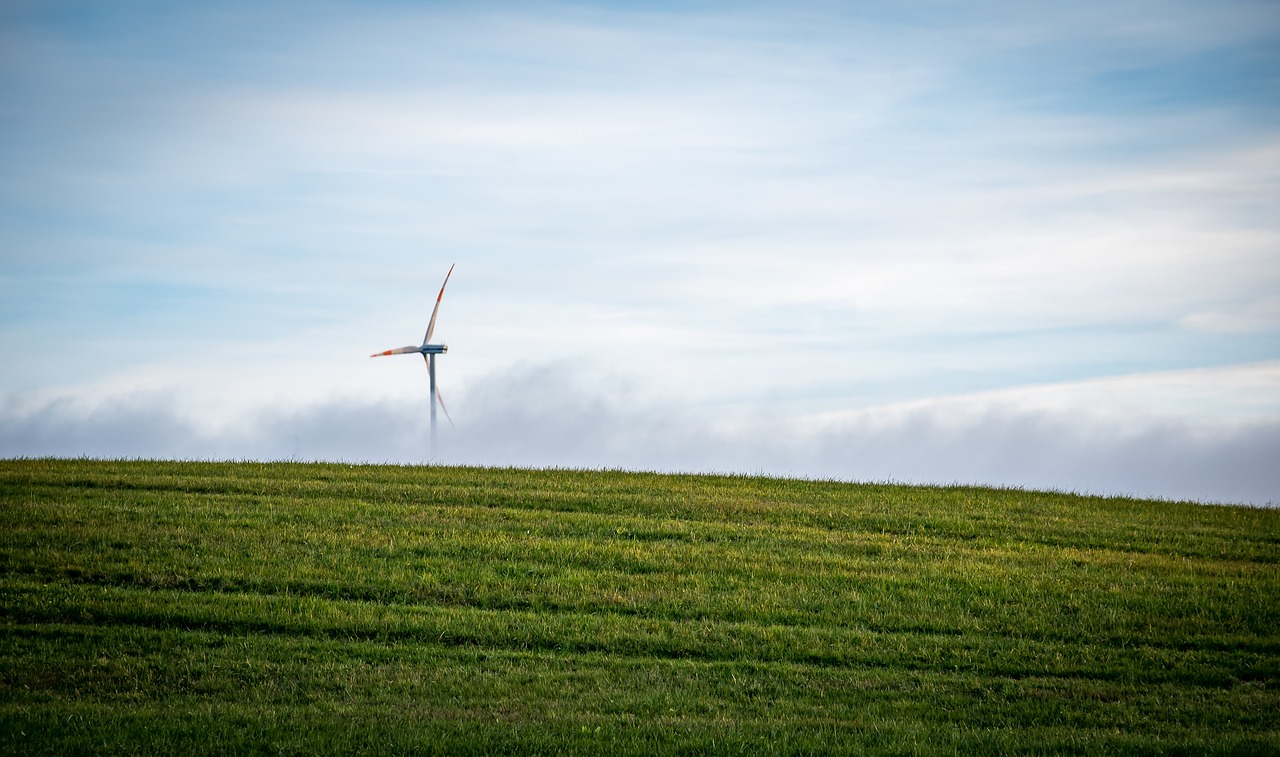
Economic Advantages
Investing in wind energy is not just an environmental choice; it’s a savvy economic decision that can yield significant returns. As we transition to a more sustainable energy future, wind power emerges as a frontrunner in creating jobs and stimulating local economies. Imagine a bustling town where wind turbines dot the landscape, generating clean energy and providing livelihoods for local residents. This is not just a dream; it's a reality in many areas that have embraced wind energy.
One of the most compelling economic advantages of wind energy is the creation of jobs. From manufacturing and installation to maintenance and operations, the wind energy sector has proven to be a robust job creator. According to the American Wind Energy Association, the industry employed over 116,000 workers in the United States alone in 2020, and that number continues to grow as more projects come online. These jobs are often high-paying and cannot be outsourced, which is a significant boon for local economies.
Moreover, wind energy projects can lead to substantial infrastructure development. Local communities benefit from improved roads, enhanced electrical grids, and increased investment in public facilities. For instance, when a new wind farm is built, it often necessitates upgrades to local infrastructure to support the transportation of large turbine components. This not only creates immediate jobs but also leaves a lasting legacy of improved services for residents.
Furthermore, wind energy contributes to energy independence. By harnessing local wind resources, countries can reduce their reliance on imported fossil fuels, which can be subject to volatile price fluctuations. This stability can have a ripple effect throughout the economy, leading to more predictable energy costs for businesses and consumers alike. In essence, investing in wind energy is like planting a seed for a more resilient economic future.
In addition to job creation and energy independence, wind energy can also lead to lower energy prices over time. As technology advances and more wind farms are constructed, the cost of wind energy continues to decline. This trend not only makes wind energy more accessible but also puts downward pressure on electricity prices, benefiting everyone from homeowners to large corporations. According to the International Renewable Energy Agency, the cost of onshore wind energy has fallen by 49% since 2010, making it one of the most cost-effective sources of new electricity generation.
To summarize the economic advantages of wind energy, consider the following table that highlights key benefits:
| Economic Advantage | Description |
|---|---|
| Job Creation | Generates thousands of jobs in manufacturing, installation, and maintenance. |
| Infrastructure Development | Improves local infrastructure, including roads and electrical grids. |
| Energy Independence | Reduces reliance on imported fossil fuels, stabilizing local economies. |
| Lower Energy Prices | Decreases electricity costs for consumers and businesses. |
In conclusion, the economic advantages of wind energy are clear and compelling. By embracing this renewable resource, communities can unlock a wealth of opportunities that not only benefit the environment but also enhance local economies and improve the quality of life for residents. As we look to the future, the question is not whether we can afford to invest in wind energy, but rather, can we afford not to?
- What are the main economic benefits of wind energy? Wind energy creates jobs, stimulates local economies, and leads to lower energy costs.
- How does wind energy contribute to energy independence? By utilizing local wind resources, countries can reduce their reliance on imported fossil fuels.
- Is wind energy cost-effective? Yes, the cost of wind energy has decreased significantly, making it one of the most affordable energy sources available today.

Challenges Facing Wind Energy
Despite its many advantages, wind energy is not without its challenges. As we continue to harness the power of the wind, we must navigate various obstacles that can hinder its widespread adoption. One of the most significant issues is intermittency. Wind energy production can be unpredictable due to varying wind speeds and weather conditions. This inconsistency can lead to challenges in meeting energy demands, especially during periods of low wind. However, innovative solutions such as energy storage systems and advanced grid management technologies are being developed to address these concerns. By storing excess energy generated during windy periods, we can ensure a steady power supply even when the winds die down.
Another challenge is the land use required for wind farms. Large areas are needed to install wind turbines, which can sometimes conflict with other land uses such as agriculture, conservation, or residential development. This raises important questions about how we can balance the need for renewable energy with the preservation of natural habitats and local communities. In some cases, careful planning and community engagement can lead to solutions that benefit both the environment and energy needs.
Moreover, the impact of wind farms on wildlife is a concern that cannot be overlooked. Birds and bats are particularly vulnerable to collisions with turbine blades. To mitigate these effects, developers are increasingly adopting strategies such as site selection that avoids critical habitats and implementing technology that can detect and deter wildlife from approaching turbines. This is crucial not only for the success of wind energy projects but also for maintaining biodiversity.
| Challenge | Description | Potential Solutions |
|---|---|---|
| Intermittency | Inconsistent energy production due to varying wind speeds. | Energy storage systems, grid management technologies. |
| Land Use | Large areas required for wind farms can conflict with other land uses. | Careful planning, community engagement. |
| Wildlife Impact | Potential harm to birds and bats from turbine collisions. | Site selection, wildlife detection technologies. |
In summary, while wind energy presents a promising path toward a sustainable future, we must acknowledge and address these challenges head-on. By investing in technology and fostering collaboration between stakeholders, we can pave the way for a cleaner, greener energy landscape.
Q: What is wind energy?
A: Wind energy is the process of converting wind into electricity using wind turbines. It is a renewable energy source that contributes to reducing reliance on fossil fuels.
Q: What are the main challenges of wind energy?
A: The main challenges include intermittency of wind, land use conflicts, and potential impacts on wildlife. Solutions include energy storage systems, careful planning, and wildlife protection measures.
Q: How does wind energy benefit the environment?
A: Wind energy significantly reduces greenhouse gas emissions and air pollution, contributing to cleaner air and a healthier planet.
Q: Can wind energy provide a reliable power supply?
A: Yes, with advancements in energy storage and grid management, wind energy can be integrated into the power supply system to provide a reliable energy source.
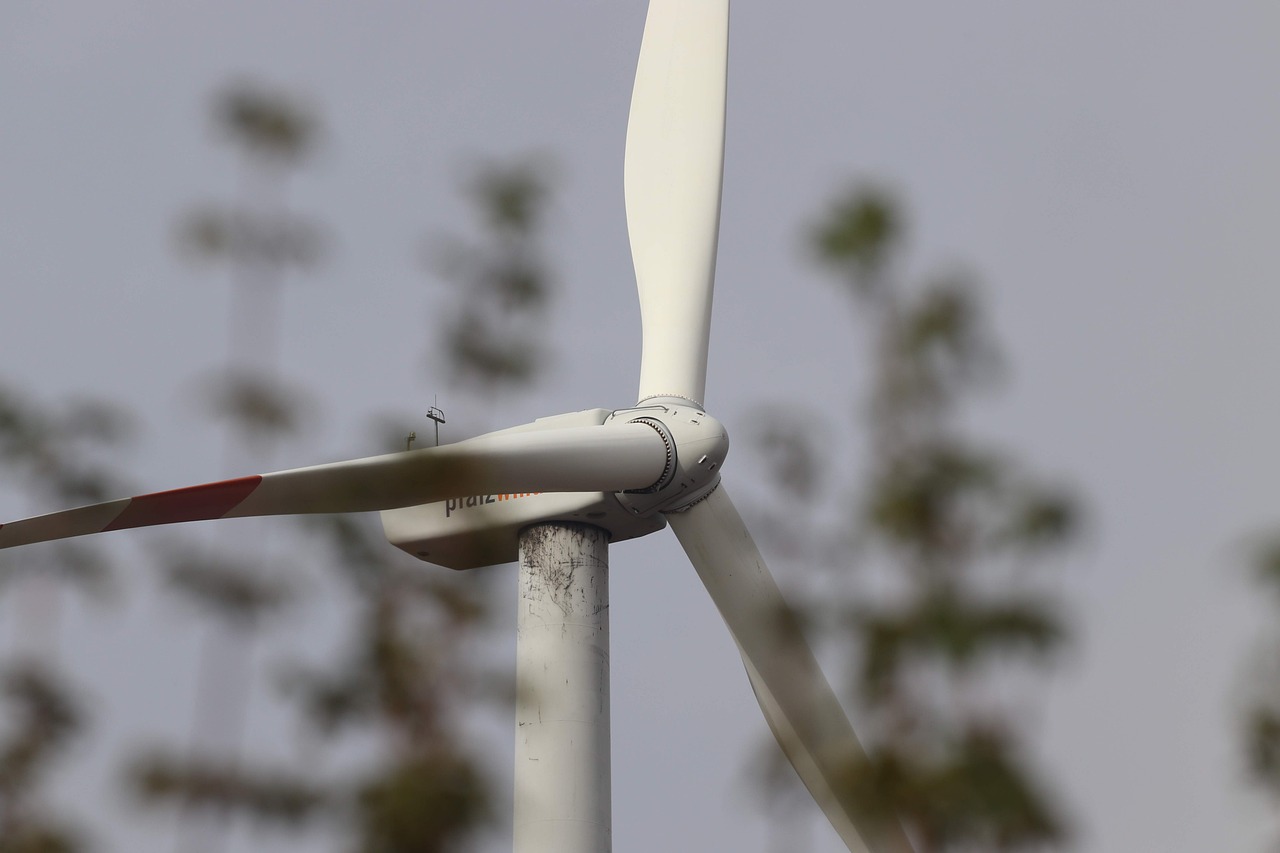
Intermittency Issues
One of the most significant challenges facing wind energy is its intermittency. Unlike traditional energy sources like coal or natural gas, which can produce a constant output, wind energy generation is heavily reliant on the availability of wind. This means that during calm days or periods of low wind, energy production can drop dramatically, leading to a mismatch between supply and demand. Imagine trying to fill a bathtub with a faucet that sometimes runs dry; that’s the reality of wind energy.
To tackle these intermittency issues, the energy sector is exploring a variety of solutions. One of the most promising approaches is the implementation of energy storage systems. By storing excess energy generated during windy periods, we can release it during times of low production. This is similar to saving leftovers in the fridge for a rainy day; it ensures that we have energy available when we need it most. Technologies such as batteries, pumped hydro storage, and even innovative solutions like compressed air energy storage are being developed and deployed to help smooth out the energy supply.
Another strategy involves enhancing grid management systems. Smart grids equipped with advanced technology can better predict energy demand and adjust the flow of electricity accordingly. This is akin to a skilled conductor leading an orchestra, ensuring each section plays in harmony. By integrating various renewable energy sources and improving grid flexibility, we can mitigate the impact of wind energy's unpredictability.
Moreover, ongoing research and development aim to improve wind turbine efficiency and enhance forecasting models for wind patterns. By accurately predicting when and where wind will be strongest, energy providers can better plan for energy distribution. This could mean that on days when wind is expected to be plentiful, we can increase production and store surplus energy for later use. The goal is to create a more resilient energy system that can adapt to the natural variability of wind.
In conclusion, while intermittency is a notable hurdle for wind energy, it is not insurmountable. With the right combination of technology, planning, and innovation, we can harness the power of the wind and ensure a reliable energy supply. The future of wind energy is bright, and overcoming these challenges is a crucial step in our journey toward a sustainable energy landscape.
- What causes intermittency in wind energy?
Intermittency in wind energy is primarily caused by the variable nature of wind itself. Wind speeds can fluctuate due to weather conditions, leading to inconsistent energy production.
- How can energy storage help with wind energy intermittency?
Energy storage systems can capture excess energy produced during high wind periods and store it for use during low production times, ensuring a more stable energy supply.
- What role does grid management play in addressing wind energy challenges?
Effective grid management allows for better distribution of energy based on demand and supply, helping to balance the fluctuations caused by intermittent wind energy.
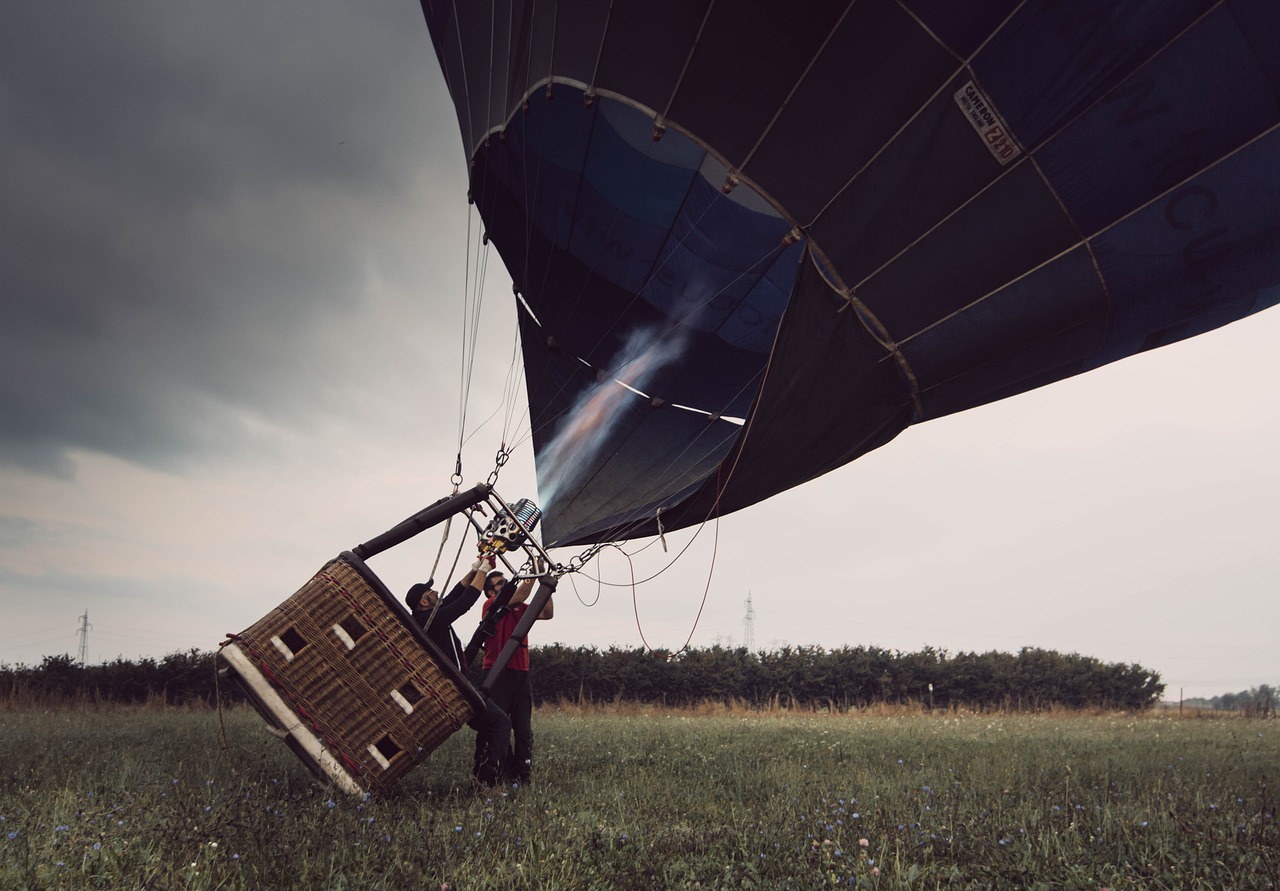
Land Use and Wildlife Concerns
As we embrace the potential of wind energy, we must also address the that come with it. Building wind farms requires significant amounts of land, which can sometimes lead to conflicts with local communities and ecosystems. Imagine a sprawling landscape dotted with towering wind turbines; while they symbolize clean energy, they also represent a shift in land use that can disrupt existing habitats.
One of the primary concerns is the impact on local wildlife. Wind turbines can pose risks to birds and bats, which may collide with the rotating blades. Studies have shown that certain species are more vulnerable than others, leading to calls for careful site selection and turbine design to minimize these risks. For instance, placing wind farms in areas with lower bird migration paths can significantly reduce fatalities. It’s a classic case of balancing progress with preservation.
Moreover, the construction and maintenance of wind farms can lead to habitat fragmentation. This occurs when large areas of land are cleared, disrupting the natural environment and making it harder for wildlife to thrive. To mitigate these impacts, developers often conduct environmental assessments before proceeding with projects. These assessments help identify sensitive areas that should be avoided, ensuring that we protect vital ecosystems while harnessing the power of the wind.
In an effort to address these concerns, many companies are adopting innovative technologies and practices. For example, some are investing in smart turbine technology that can detect the presence of birds and bats, temporarily shutting down turbines to prevent collisions. This not only helps in protecting wildlife but also enhances the overall sustainability of wind energy projects. It’s like having a guardian angel watching over our feathered friends while we pursue cleaner energy solutions.
Furthermore, community involvement plays a crucial role in the planning and development of wind farms. Engaging local residents in the decision-making process can foster a sense of ownership and responsibility towards the environment. When communities understand the benefits of wind energy and how it can coexist with wildlife, they are more likely to support these initiatives. It’s about creating a partnership between energy producers and the people who live in these areas.
Ultimately, the challenge lies in finding a balance between expanding our renewable energy infrastructure and protecting our natural world. By prioritizing thoughtful planning, innovative technology, and community engagement, we can pave the way for a future where wind energy thrives alongside our precious wildlife. It’s not just about harnessing the wind; it’s about doing so in a way that respects and preserves the ecosystems we all depend on.
- What are the main environmental impacts of wind energy? Wind energy can affect local wildlife, particularly birds and bats, and may lead to habitat fragmentation. However, with careful planning and technology, these impacts can be minimized.
- How can wind farms coexist with wildlife? By conducting environmental assessments, selecting appropriate sites, and using technology to monitor wildlife, wind farms can be developed in a way that protects local ecosystems.
- Are there any regulations regarding land use for wind energy? Yes, regulations vary by region, but many areas require environmental reviews and community consultations before wind farms can be constructed.
Frequently Asked Questions
- What is wind energy and how does it work?
Wind energy is the process of converting the kinetic energy of wind into mechanical power, which can then be transformed into electricity. This is achieved through wind turbines that capture wind currents. When the wind blows, it turns the blades of the turbine, which spins a generator to produce electricity. It’s like harnessing the natural breeze to light up our homes!
- What are the main benefits of using wind energy?
Wind energy offers a plethora of benefits! Firstly, it significantly reduces greenhouse gas emissions, helping combat climate change. Secondly, it promotes energy independence by utilizing a local resource—wind. Additionally, the wind energy sector creates jobs and stimulates local economies. It’s a win-win for both the environment and the economy!
- How does wind energy impact the environment?
Wind energy is one of the cleanest energy sources available. It produces no emissions during operation, leading to a dramatic reduction in air pollution. Plus, it conserves water resources, as wind turbines require very little water compared to conventional energy sources. Imagine a world where we can power our lives without harming the planet!
- What challenges does wind energy face?
While wind energy is promising, it does face some challenges. One major hurdle is intermittency—wind isn’t always blowing, which can lead to inconsistent energy production. Additionally, the land use for wind farms can impact local wildlife. However, advancements in energy storage and careful planning can help tackle these issues!
- Can wind energy contribute to job creation?
Absolutely! The wind energy sector is a booming industry that creates numerous jobs, from manufacturing and installation to maintenance and operation. Investing in wind energy not only helps the environment but also provides employment opportunities for local communities. It’s like planting a tree that grows jobs!
- Is wind energy a reliable source of power?
Wind energy can be reliable, but it does depend on wind conditions. To enhance reliability, energy storage solutions and smart grid management are being developed. These technologies help ensure a steady supply of electricity, even when the wind isn’t blowing. Think of it as having a backup battery for those calm days!



















